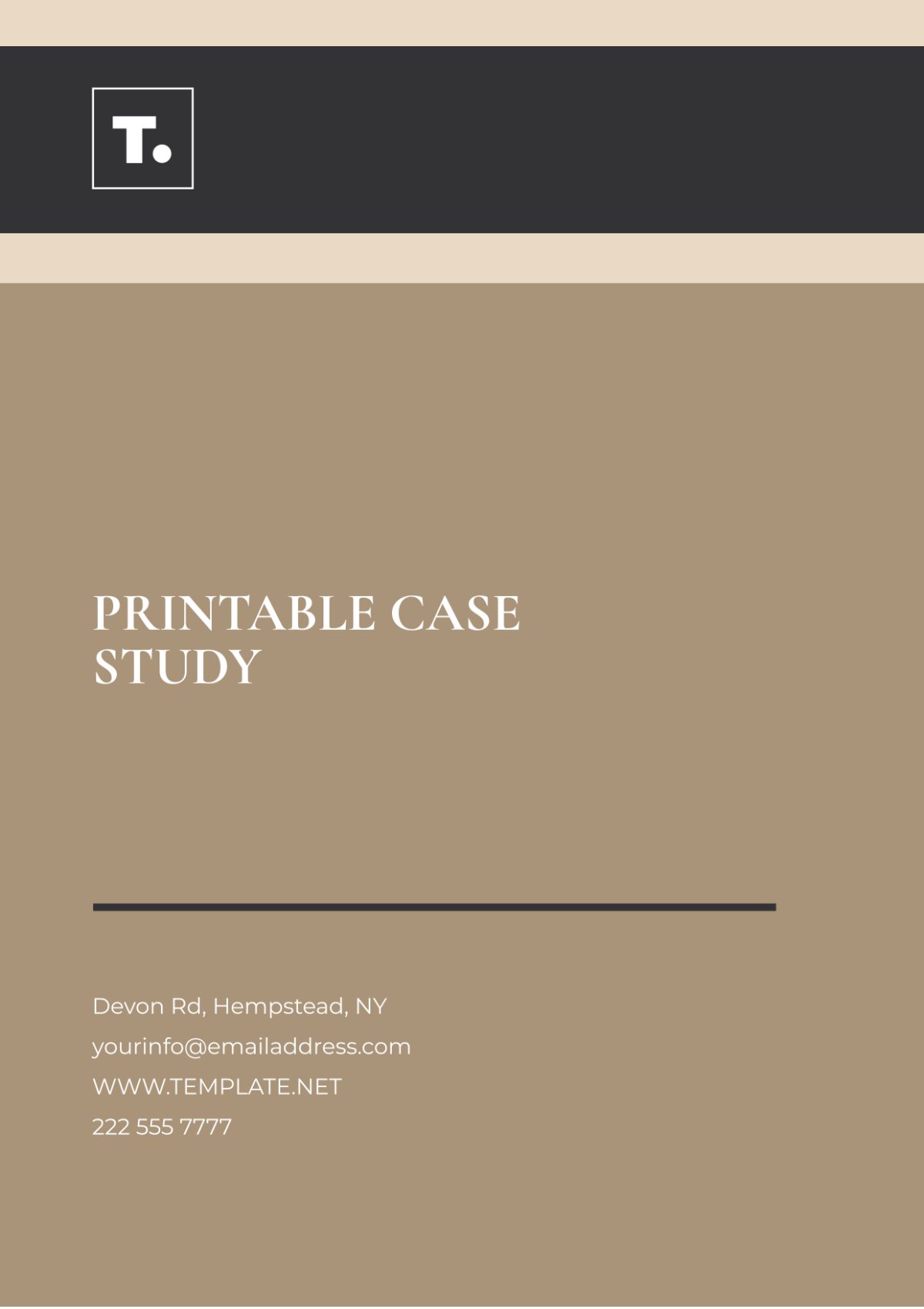Free Printable Case Study

Prepared by: [Your Name]
I. Executive Summary
In 2050, urban mobility has reached a critical juncture where traditional transportation models are no longer sufficient to meet the growing needs of rapidly expanding cities. [Your Company Name], a leader in smart transportation technology, embarked on a mission to revolutionize urban mobility in Metropolis City through the implementation of an integrated smart transportation system. This case study explores the challenges faced, the solutions implemented, and the outcomes achieved.
II. Background
A. Company Overview
[Your Company Name] has been at the forefront of developing cutting-edge transportation technologies for over two decades. Their mission is to create efficient, sustainable, and user-friendly transportation systems that improve the quality of life in urban areas.
B. Project Context
Metropolis City, with a population of over 10 million, faced significant traffic congestion, pollution, and inefficiencies in its transportation network. The city needed a comprehensive solution to address these challenges and prepare for future growth.
III. Challenges
A. Traffic Congestion
Metropolis City experienced severe traffic congestion, with average commute times exceeding 45 minutes during peak hours. This not only impacted productivity but also contributed to higher levels of air pollution.
B. Environmental Impact
The reliance on traditional fossil fuel-powered vehicles was contributing to rising levels of greenhouse gases and deteriorating air quality in the city.
C. Infrastructure Limitations
The existing transportation infrastructure was outdated and lacked the necessary capabilities to support advanced transportation technologies and increased traffic volumes.
IV. Solution Implementation
A. Smart Transportation System
[Your Company Name] proposed the installation of an advanced smart transportation system that included:
Intelligent Traffic Management: Implementing AI-driven traffic signals and real-time traffic monitoring to optimize traffic flow.
Electric Vehicle Integration: Developing a network of electric vehicle charging stations and incentivizing the adoption of electric vehicles.
Public Transportation Enhancements: Upgrading the public transportation fleet with autonomous buses and trains equipped with state-of-the-art navigation and safety systems.
B. Implementation Phases
The project was divided into three key phases:
Phase 1: Planning and Design - Conducted in-depth studies and simulations to design the smart transportation system.
Phase 2: Installation and Testing - Deployed the technologies across various city zones and conducted rigorous testing.
Phase 3: Full-Scale Rollout - Launched the system citywide, accompanied by public awareness campaigns and training programs.
Implementation Timeline
Phase | Duration | Key Activities |
|---|---|---|
Planning and Design | 6 months | System design, simulations, stakeholder meetings |
Installation and Testing | 12 months | Technology deployment, system testing, debugging |
Full-Scale Rollout | 6 months | Public launch, training, monitoring |
V. Outcomes
A. Traffic Improvement
The smart transportation system led to a 30% reduction in average commute times and a significant decrease in traffic congestion, improving overall city mobility.
B. Environmental Benefits
The integration of electric vehicles and improved traffic management reduced greenhouse gas emissions by 20% and improved air quality across the city.
C. Public Satisfaction
The city’s residents reported higher satisfaction with the transportation system, noting increased reliability and convenience in their daily commutes.
VI. Lessons Learned
A. Importance of Comprehensive Planning
Thorough planning and stakeholder engagement were crucial to the successful implementation of the smart transportation system. Addressing potential challenges early on helped mitigate risks and ensure a smoother rollout.
B. Continuous Monitoring and Adaptation
Ongoing monitoring and adaptation of the system are essential to address emerging issues and optimize performance.
C. Public Engagement
Engaging with the public and providing adequate training and support helped in the successful adoption and utilization of the new transportation technologies.
VII. Conclusion
The successful transformation of Metropolis City’s transportation network through smart technology exemplifies how innovative solutions can address complex urban challenges. [Your Company Name] continues to lead the way in developing and implementing cutting-edge technologies to enhance urban mobility and sustainability.
- 100% Customizable, free editor
- Access 1 Million+ Templates, photo’s & graphics
- Download or share as a template
- Click and replace photos, graphics, text, backgrounds
- Resize, crop, AI write & more
- Access advanced editor
The Printable Case Study Template offered by Template.net is designed for easy use and clarity. This customizable template includes sections for an introduction, methodology, results, and conclusions, making it perfect for detailed case analysis. Downloadable and editable in our AI Editor Tool, it allows for seamless customization and printing to suit your needs.
You may also like
- Marketing Google Slide
- Marketing Letter
- Marketing Quotation
- Marketing Report
- Marketing Strategic Plan
- Marketing Plan
- Marketing Proposal
- Marketing Flyer
- Marketing Presentation
- Real Estate Marketing Plan
- Marketing Contract
- Marketing Agreement
- Marketing Resume
- Marketing Checklist
- Marketing Brochure
- Marketing Banner
- Marketing Schedule
- Marketing Vector
- Marketing Logo
- Marketing Chart
- Marketing Campaign Plan
- Marketing Budget
- Marketing Postcard
- Marketing Poster
- Marketing Facebook Post
- Marketing Instagram Post
- Marketing Newsletter
- Marketing Infographic





























